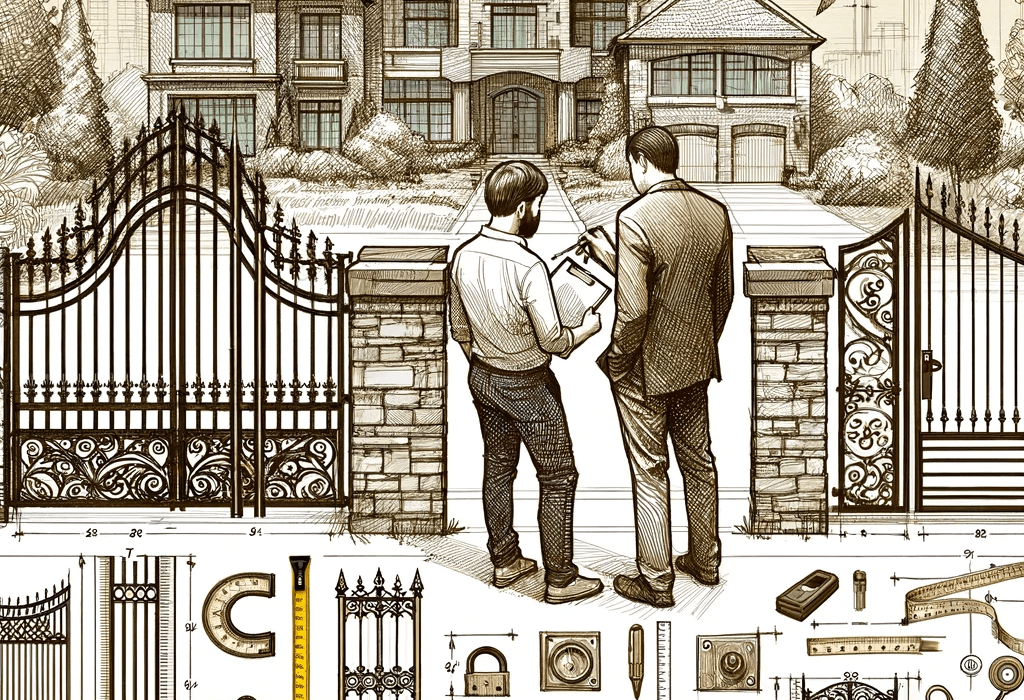The Art of Perfecting Gate Dimensions
In Austin’s diverse architectural landscape, the design of a gate is as crucial as the fence it accompanies. It’s not just a matter of security or aesthetics; it’s about functionality, accessibility, and complementing the overall property design. This detailed guide explores the essential considerations in determining the ideal gate width, catering to both aesthetic sensibilities and practical requirements.
Understanding Gate Functionality and Accessibility
The primary function of a gate is to provide access. Therefore, the gate’s width should be determined based on its intended use.
- Pedestrian vs. Vehicle Access: A 36 to 48 inches width is typically sufficient for pedestrian gates, allowing comfortable access for individuals and small groups. For vehicle gates, the width should accommodate the largest vehicle that regularly accesses the property, usually ranging from 10 to 12 feet for residential driveways.
- Special Considerations for Service and Emergency Access: It’s imperative to consider occasional needs such as moving large furniture, accessing landscaping equipment, or emergency services. Ensuring that your gate can accommodate these situations is essential for practicality and safety.
Aesthetic Integration with Fence Design
The gate is often the focal point of a fence and, by extension, the property’s exterior. Its width should, therefore, harmonize with the fence design and the property’s overall architectural style.
- Proportion and Balance: The gate should be proportionate to the fence and the property facade. A gate that is too wide or too narrow can disrupt visual balance and diminish aesthetic appeal.
- Design Styles and Width Implications: The property’s architectural style can also dictate the appropriate gate width. A wide, grandiose gate may suit a large, traditional property, while a narrower, sleek gate often complements a modern minimalist design.
Material Considerations and Structural Integrity
The gate material influences its appearance but also functionality and durability.
- Weight and Support: Heavier materials like wrought iron or hardwood might require additional support structures for wider gates, such as reinforced posts or overhead support beams.
- Maintenance and Longevity: The gate width can impact maintenance needs and longevity. Wider gates may require more frequent maintenance checks to ensure optimal condition.
Navigating Local Regulations and Standards
In Austin, as in many cities, there are specific regulations regarding gate construction, including width limitations, especially for front-facing property gates.
- Zoning Laws and Neighborhood Regulations: A thorough overview of Austin’s zoning laws and any neighborhood-specific regulations that might affect gate width is crucial. This includes height-to-width ratios, setback requirements, and visibility rules.
- Permit Requirements for Gate Construction: Understanding when a permit is required for gate construction or modification and the process for obtaining one is essential for legal compliance.
Professional Consultation and Installation
Given the complexities of gate design and installation, professional input can be invaluable.
- Working with Design Professionals: Collaborating with architects or fence design specialists can ensure that your gate meets functional needs and enhances your property’s curb appeal.
- Expert Installation for Durability and Safety: Professional installation is crucial, especially for wider gates, to ensure they are securely anchored, operate smoothly, and meet all safety standards.
Conclusion: Crafting Gates that Welcome and Impress
In Austin, where each home tells its story, the gate is more than just an entry point; it’s a statement. Determining the ideal width for your gate is a thoughtful process that blends functionality, design, and compliance with local standards. This guide aims to equip Austin homeowners with the knowledge to make informed decisions. This will ensure their gates are welcoming and a testament to their attention to detail and commitment to quality.


